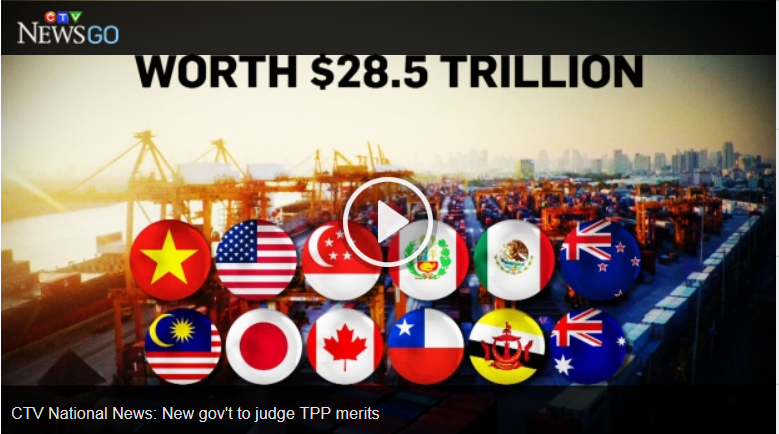Twelve nations, including Canada, have reached a tentative deal on a massive Pacific Rim trading bloc billed as the largest-ever deal of its kind, with implications for hundreds of millions of people, hundreds of products and industries, and for long-term relationships between countries on four continents.
“With this agreement, the largest economic partnership in the history of the world, Canadian exporters will gain nearly tariff-free access to almost 800 million customers in the Asia-Pacific region… including — crucially for us — Japan.”
First, however, the deal requires political approval.
To take effect, it must be ratified by the parliaments and lawmaking authorities of all 12 member countries. Canada will be the first political testing-ground — the agreement lands smack in the midst of a federal election campaign to decide who will control the Parliament that determines whether it lives or dies.
Canada agreed to 3.25 per cent more foreign imports, a minuscule change compared to what some countries asked for. That means a bit more international products like butter on grocery shelves now 90-per-cent dominated by domestic content. For their loss, Canadian farmers will receive billions in government support under a series of programs over at least 10 years.
The reaction from the auto industry has been more negative.
There’s a major discrepancy between Canada and the U.S. on tariff-elimination for cheaper Asian parts — with a five-times-faster phase-out north of the border, five years compared with the U.S.’s 25 years. In addition, both countries will see a 17.5-per-cent drop in the amount of regional content required in cars to avoid a tariff, compared with NAFTA.
Several countries including Thailand and Colombia have already mused about joining TPP, which involves North America, Chile, Peru, Japan, Brunei, Singapore, Vietnam, Malaysia, New Zealand and Australia.
Please read the full post in CTV News Business


Leave a Reply